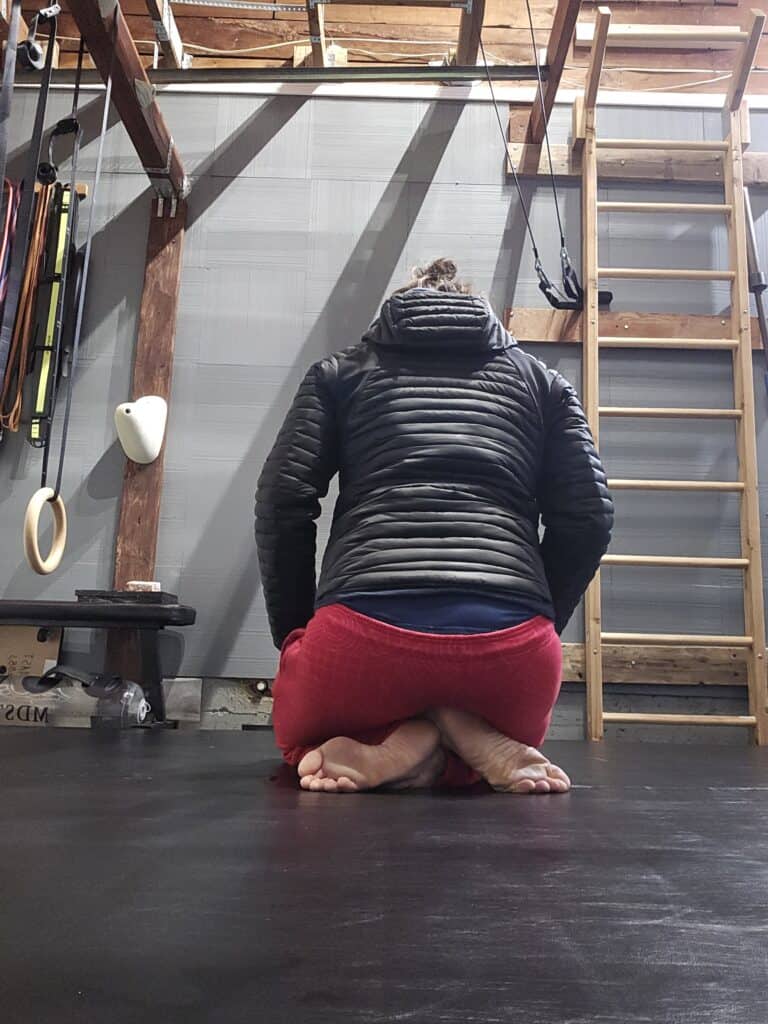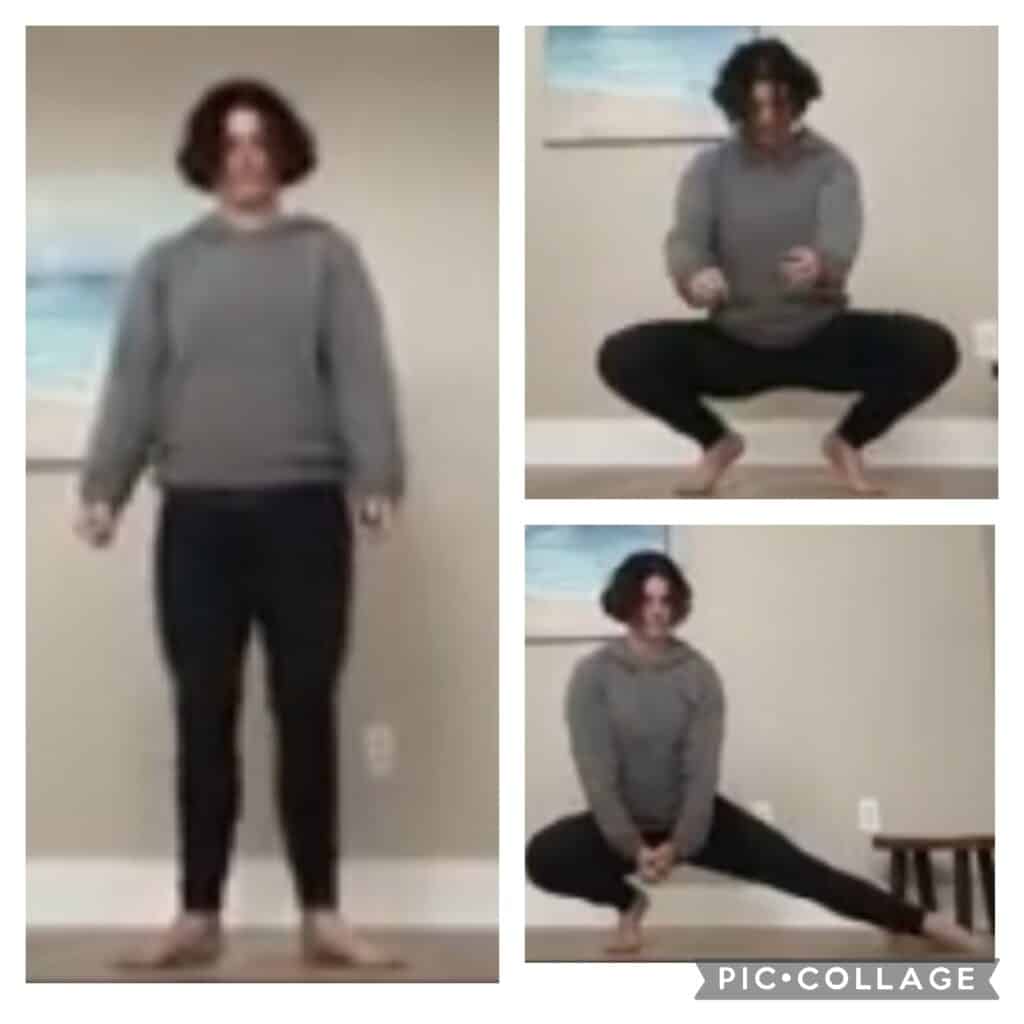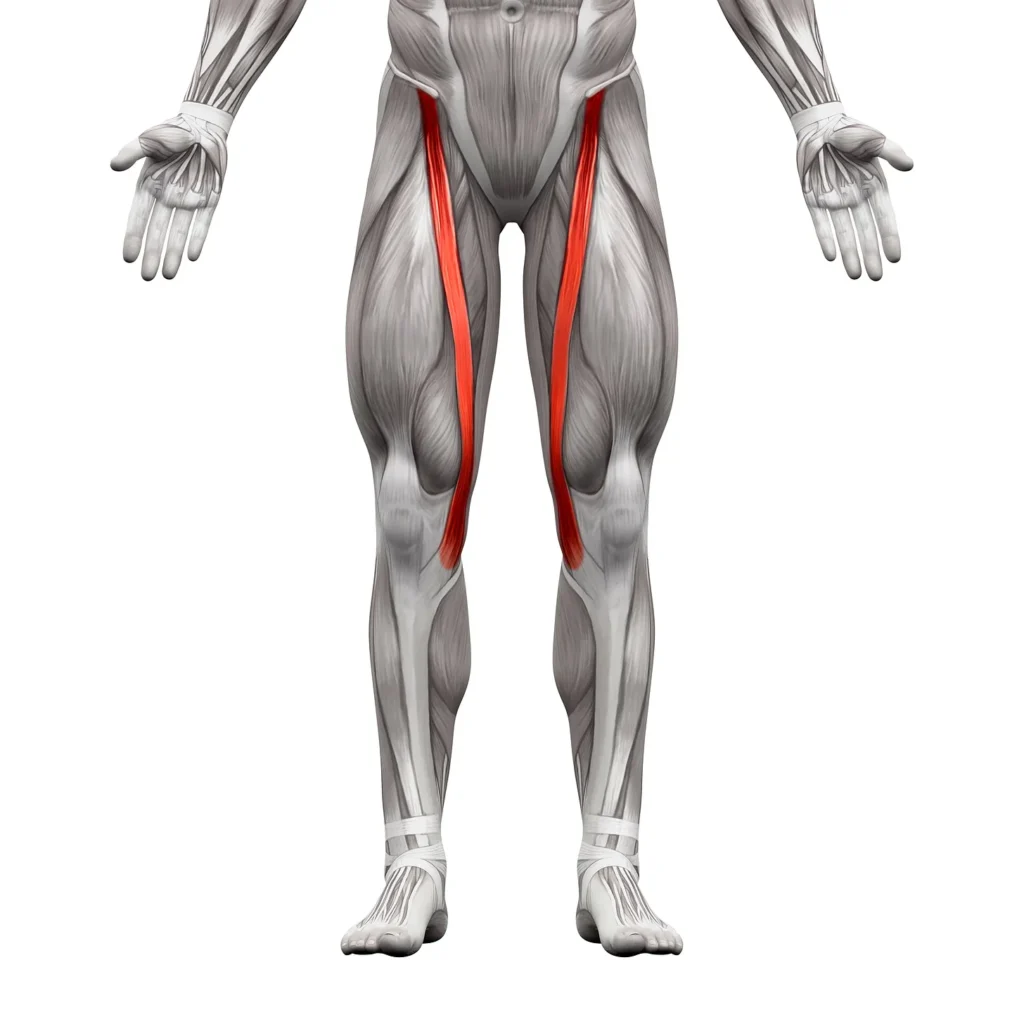
A Different Way to Use, Train, & Treat the Knee (Part 3)
Part 1 of this series explained how knee should not be used as a load-bearing joint. Part 2 showed how pressuring the knee can help build safety, alignment, and desired force at the desired time. This third and final segment hopes to show how angling the lower leg is a desirable manipulation for both pain relief and performance. The rules that govern one, govern the other. We have been demonizing the solution because we don’t like how it looks.
Concept #3: Bring the Heel Under the Anus.
Again, these words are carefully chosen. I have been tinkering around with “curtseying”, “heel over heel”, “heel under midline”, but my perception of what is center is skewed. I lean toward my right side. My hips do not sit evenly over my ankles. Asymmetry. The anus is the objective center facing downward. One true center allows each leg to find it while moving.
First, some video. I had been having some medial knee pinching for about a month, that had gone from an 8 to a 2 in the last several weeks. Then I went to Vegas and learned some things. It wasn’t until I got home that I started putting the performance information into a personal pain context. I was floored that this version of the low sit fully cleared up the knee. Space was made where it was lacking:
Please note that the feet, shins, and hip keep moving, even when folded up against the floor.
Here is that same concept revealed in athletes moving fast:
View this post on Instagram
Perfectly worded as a “characteristic of speed.”
Stills reinforce this concept in snapshot detail, but remember that a freeze frame has a before and after that is just as important (if not more important) than what is presented in a capture. For the sake of observation and understanding, however, they can provide some clarity behind what is happening and where to look.
The body sits on top the top, left heel. Weight and hips shift left. Toes curl.

Ground leg heel is approaching or leaving under anus.
Air leg heel is utilizing or approaching that space.

My friends Adarian Barr and Jenn Pilotti put out an instructional video on how to set up the heel position in reference to one’s Q angle:
Stills from that video. Where the heels point is one thing, and where the heels load is another. Bottom right, in the cossack, you see the weight bearing leg under the anus:

They then brilliantly clarified that the path of the heel more accurately follows the Sartorius muscle (or S-angle):

The goal would be to match the powerful outer hip to track with the inner knee.
Now that you have some insight about what to do and how to do it, there still may be a question on which leg to start with. If there is one with a pain issue, I suggest you start there. Otherwise, a logical place to begin is the half that loads more straight than lateral. Said another way, start with the hip with the “smaller Q angle” or the side that you stack more on top of.
Here is one last visual to help communicate things:
You WANT a large lateral shift.
If you happen to be in Europe and wish to siphon information from my two brilliant friends, they will be in the Netherlands in April. For less than $500, you will have both of them (plus Dawn Ross!) at your disposal for a unique interactive experience.



